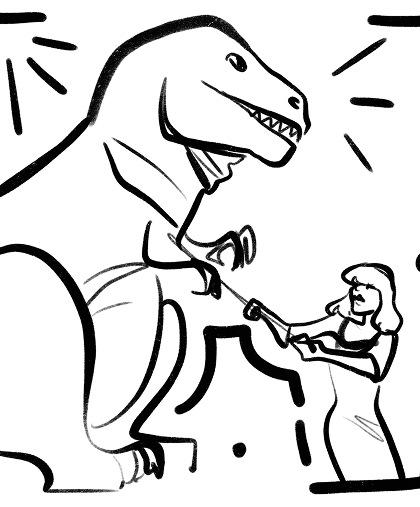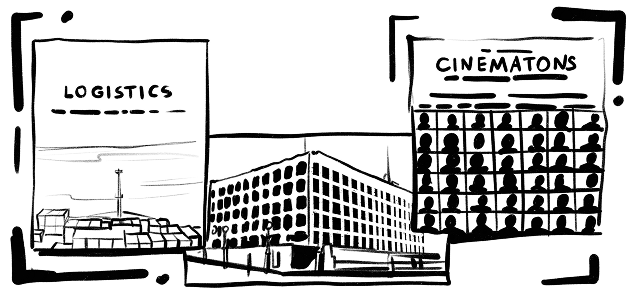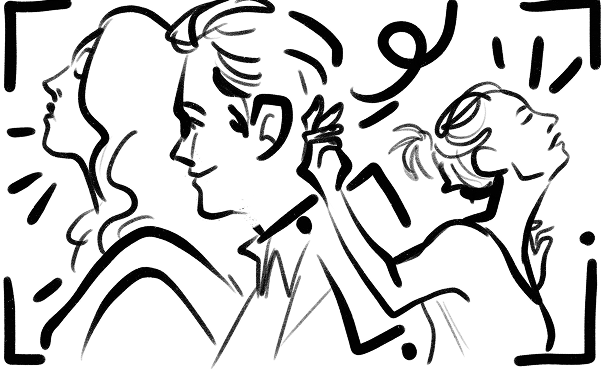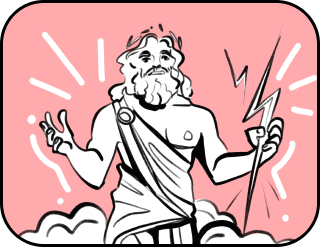When movies stretch seconds into minutes
“A step, as slow as…”
Murat Nasyrov,
lyrics from Shag Song (“Step”)
Salvador Dalí once called “The Persistence of Memory” his “most famous” work. The melting clocks on the canvas became a time’s subjective flow universal symbol. The artist had many like-minded peers in the art scene —and cinema also has its own languidly ticking clocks. The clock face, with its pliable hands, morphs into a directorial vision metaphor. You can feel five minutes in a movie simultaneously like an eternity or one instant. Those five-minute slots stretch into an excruciatingly slow sequence, and suddenly you are trapped in cinema of slooooowness.
Freeze Frame Shot!
No rush! Prolong the pleasure. You have got the whole movie time ahead of you — hours of it. An usher gestures smoothly to a seat in an empty row, like an invitation to a ladies’ choice dance: everything seems ordinary, but there is a twist.
Welcome to cinema of slowness!
The critics define it as arthouse predominantly, “not for everyone,” or excessively decorative. They collate its narratives to routes leading into the abyss, coloring their reviews with vivid metaphors to capture every slow masterpiece with the emotional saturation. Screen time is presented as a drowsy fairy-tale realm: soulful, uneventful, without beginning or end.
Technically, slow cinema can be called “genuine”. Zoom-ins, extreme close-ups erase editing seam impression, making viewers feel like they are watching uncut CCTV. Wim Wenders, one of the slow cinema directors, shot his first film simply by leaving a camera by a window. No shock-tactic-additives like special effects or viral soundtracks. Nonprofessional actors often excel here, especially while playing themselves.
In perception terms, slow cinema is superlatively interactive. You have time to settle into its world before you know it and you have crossed the screen’s threshold very soon. “I believe, I do believe!” Konstantin Stanislavski might have said watching Wenders’ latest, “Perfect Days” (2023). This film diary follows a Tokyo toilet cleaner’s monotonous routine. For three full minutes, the main character unhurriedly performs a simple morning awakening ritual in real time in front of us — making his bed, washing up, getting dressed, and brushing teeth. Nothing else happens. But we bond with him, we cross the screen’s threshold, inhabiting the character’s world. In the same time span, his cinematic counterpart—Evelyn from the fiction tragicomedy “Everything Everywhere All at Once” (2022)—darts through the multiverse, living out multiple divergent lives. The shots flicker across the screen like a child’s kaleidoscope – a fleeting impressions whirl, where memory struggles in vain to grasp any coherent image. We remain glued to our seats, spectators at a safe remove. “Everything” and “everywhere”, delivered “all at once”, quickly deflate into oblivion after viewing. The spectator, having visited the cinema, never truly entered the film. He never got a chance.

Fast cuts are undeniably man-made, dictating genre. Every blockbuster is, in essence, screen-bound fantasy. The slow shot brings cinema closer to documentary. Art, dissolved in life, is recreated on screen in a form that approaches the original.
This genre is called ‘wandering’ because such cinema constantly strays beyond boundaries. It was never oriented toward them in the first place. The term cinema of slowness itself emerged from the film critics’ perceptiveness Michel Ciment (France) and Jonathan Romney (UK) in the 2000s, who independently coined it to ‘label’ the slow fever that had gripped the world cinema. It was precisely at the millennium turn that contemplative cinema reached its zenith and gained resounding festival acclaim.
In 1987, Chicago hosted a now-legendary, completely sold-out film premiere “The Cure for Insomnia” by American director John Henry Timmis IV. The entire 87-hour screening ran without intermission – its plot nature was really captivating, which consisted solely of the main character reading a poem. The Guinness Book of World Records certified “The Cure for Insomnia” as the longest film ever made, a record that remained unbroken for 19 years.
In 1994, Hungarian director Bela Tarr was awarded the Caligari Prize at The Berlin International Film Festival for the groundbreaking work in the Young Cinema Forum. Jury members found themselves utterly mesmerized by his hypnotic long-takes. His “Satantango” immerses viewers in the rural commune bleak existence. The director’s signature technique became the genre’s calling card; “Tarr shots” are now indelibly linked to a genius deceleration mechanism.
The Cannes Film Festival’s Palme d’Or was awarded consecutively to slow cinema directors who captured an eternal moment of human existence for two years: Abbas Kiarostami’s “Taste of Cherry” (1997) and Theo Angelopoulos’ “Eternity and a Day”(1998).
The cinema of slowness universal language gradually became spoken worldwide. Among its recognized masters are directors from every corner of the planet: Apichatpong Weerasethakul (Thailand), Abbas Kiarostami (Iran), Pedro Costa (Portugal), Terrence Malick (USA), Corneliu Porumboiu (Romania), Albert Serra (Spain), Andrei Tarkovsky (Russia), Bela Tarr (Hungary). The list goes on. And we will continue it. A bit later. In cinema of slowness, nobody’s in a hurry to get anywhere.
Cinematic deceleration may have emerged as an arthouse defense mechanism against life’s accelerating rhythms. The 20th Century, having claimed the title of ‘the speed century,’ demanded a pause. Contemplating eternity while in motion proves inconvenient. Slow cinema effortlessly resolved this existential dilemma.

Critic Matthew Flanagan attempted to systematize the chaotic creative slowing down cinema process. The result was his 2008 “newborn” essay “Towards an Aesthetic of Slow in Contemporary Cinema”, which introduced the public to the very pillars upholding slow cinema’s planetary system: extended (often excessively) shots, narrative minimalism and decentralization, and a marked focus on stillness and everyday routine.
Yet this theoretical cetacean family gathers only on-paper. And even then in short membership within Anthony Scott’s 1968 slow-cinema quintessence “The Longest Most Meaningless Movie in the World”. The film lacks any coherent narrative structure, instead presenting a compilation of disconnected “outtakes” from other works, blank footage, and short commercials. This decomposing narrative apotheosis lasts for 48 hours.
The author’s message behind any slow film mercilessly shatters fragile stereotypes. Matthew Flanagan’s proposed matrix never became slow cinema’s creative manifesto.
Cinema Not for Everyone?
What, leaving already? Something went wrong —too monotonous, too bleak, and who has time for this in the real world?
If you have the bad skimming description habit and getting the gist of “thick novels” through reviews, then slow cinema will need more time to carve a path to your heart. How much more? Well, let’s start with the fact that the average film, we are used to, runs about two hours. Now, let’s switch to a different unit of measurement. We start gently counting in days. Among the genre’s three longest films:

· “Logistics” (2012) by Erika Magnusson and Daniel Andersson. This Swedish film lasts over 35 whole days (857 hours)—the exact runtime needed to follow the pedometer production in a Chinese factory and its logistical journey to a Swedish retail store. To maintain intrigue, the supply chain is presented in reverse, starting from the point of sales.
· “Modern Times Forever” (2011) by the art collective Superflex. A Danish 10-day (240-hour) meditation of the headquarter timber corporation.
· “Cinematon” (2018) by Gerard Courant.
Over 8 days (207 hours) of 2,880 silent vignettes featuring unexpected characters from infants to Jean-Luc Godard doing whatever they wish. That is the script or its omission. The filming process was so captivating for the French director that it spanned 40 long years.
Don’t panic! Slow cinema doesn’t always mean plunging the screening room into a temporal hole. These record-breaking films are exceptions to very flexible rules. There is no gold standard for slowness in contemplative cinema—time here is elastic. A real-world minute might stretch (not to be confused with drag) into an hour or longer… or remain equal to its “rated value”. A “Pause” is not always measured with a stopwatch. Take the butterfly at the beginning of Andrei Tarkovsky’s “Ivan’s Childhood” (1962): it flutters naturally for just a few seconds, yet the scene feels slow due to the “magnifying glass effect” — the camera forces us to fixate on an insignificant detail we’d likely overlook in reality. Outside the cinema, we rarely have the opportunity or desire to track an insect’s flight path, no matter how mesmerizing this spectacle is.
Still watching the clock? You are wasting the time.
Cinema for Everyone!
To each fellow — his own slow. It is often said that three things are endlessly watchable: fire, water, and The Wall Global. But the contemplative cinema lens can capture anything—far more than just the gray haze of another village morning. The techniques of slow cinema are now strategically employed across genres. The deceleration mechanics satisfy that Faustian urge to freeze a flash moment, just to see how beautiful it really is.
The opening of Cedric Klapisch’s drama “En Corps” (2022) lingers obsessively on an excerpt from a ballet performance. At first, it is hard to tell whether this is a standalone broadcast of a classical piece or the film part. The hyper-realism is heightened by its non-professional actor lead: Paris Opera étoile Marion Barbeau plays the protagonist, eliminating the need for frantic double-work.
In Elise Girard’s comedy “Sidonie in Japan” (2023), the camera adopts a pseudo-documentary gaze, fixating on a panoramic cemetery view with voyeuristic precision. It feels like she has “caught” eternity itself. The protagonists literally step into the frame—yet the camera remains unmoved.

Still have unanswered questions about life? Slow cinema is the perfect interlocutor. Your dilemma has likely passed under the contemplative lens gaze, examined from every angle.
The slow cinema infiltration into all spheres of modern filmmaking has given rise to a new hybrid genre – “slow-burn horror” (slow burner). A true breakthrough for radical genre cinema. Viewers still feel fear – not from shocking special effects, but from growing anxiety and terrifying uncertainty. This genre’s practitioners abandon conventional plot structures and predictable characters. The immersion into an atmosphere of fear occurs gradually. There is ample time not only to comprehend the horrors of the director’s vision but also to unleash your own wild imagination. Twice as terrifying!This is exactly what audiences experienced with Oren Peli’s sensational “Paranormal Activity” (2007). The bone-chilling horror of this “slow burner” works through the now-familiar pseudo-documentary CCTV technique. The main characters attempt to “detect” supernatural presence in their home by setting up a camera that does not immediately (!) reveal the terrifying truth. This horror film’s gradual descent into a fear spiral proved so effective at frightening packed theaters that it became one of the highest-grossing films and spawned a full-fledged franchise.
Perhaps the next products off the cinematic deceleration assembly line will be slow-dramedies or slow-fiction. Are you ready to wait a little longer?
Life in constant action mode flies by too quickly. The number of converts to this changed rhythm keeps growing. Slow cities multiply, where nobody is in a hurry. Slow parents do not push their children’s development. Slow money gets invested in restoration rather than hyper consumption. The popular Slow Life movement takes increasingly diverse forms. Art, reflecting on this new trend, grows ever more confident in speaking the language of slow.Stay here! You will make a fine slow-viewer.
But it takes time.
The micro world makes particles dance to the melody of probability.
Thank you!




